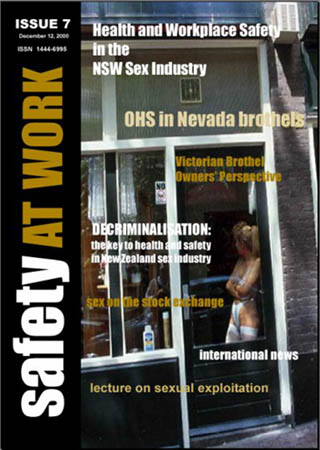In 2000, sexworkers advocates in Australia published “A guide to best practice – Occupational health and safety in the Australian sex industry”. They tried for some time to have OHS authorities accept it as an industry-based code applicable to that particular State. As far as I know, they were unsuccessful but many of the elements of the guide have been picked up in various laws and licensing conditions since then. An updated soft version of the guide is available online, along with guidelines from other jurisdictions. (My edition of Safety At Work concerning the sex industry is still available as a free download)
I was reminded of this today when I saw a report from New Zealand about sexworker safety. It was reported that two Women’s Institute members from England have undertaken a world tour of brothel districts to determine the impact of local laws on prostitution. They were very impressed by New Zealand’s sex industry.
I am very impressed that an institution like the Women’s Institute undertook this activity. The realist approach to an activity that will never go away speaks volumes for how an organisation unfairly stereotyped is establishing a contemporary relevance.
Disclaimer: I treasure the WI Cookbook I purchased in the Lake District on my honeymoon over 20 years ago. It’s much better than some of the modern books that rely on manufactured ingredients.

